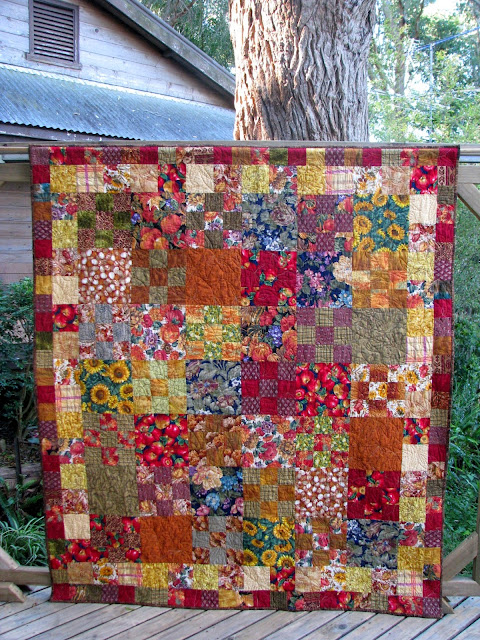Inspiration
at Every Street Corner
I can’t leave 2000 without posting up a few photos of Braidwood. Each year, since 1995, the town obligingly hosts a quilt extravaganza – an Airing of the Quilts. Quilts are only aired on the Saturday but both days are packed with all kinds of interesting things to do and see. Braidwood is a quaint village full of wonderfully restored cottages – quite historic in its own right (but only old in comparative terms).
The “airing” is usually held annually in late November and made for a long day’s drive from Sydney. This year though, quite likely our second visit, we had decided to drive on to Canberra and spend Sunday doing a textile tour of our Capital’s famous quilt shops. Needless to say, we found lots to look at and quite a few enticing fabrics. Why didn’t I buy a car with a bigger boot?
These little trips away are the perfect remedy for lack of inspiration, terrific for stash building (you know what I mean!!), and make a nice addition to our group’s annual program of activities. Thankfully I took my camera, so, we do have a few reminders.
I can’t leave 2000 without posting up a few photos of Braidwood. Each year, since 1995, the town obligingly hosts a quilt extravaganza – an Airing of the Quilts. Quilts are only aired on the Saturday but both days are packed with all kinds of interesting things to do and see. Braidwood is a quaint village full of wonderfully restored cottages – quite historic in its own right (but only old in comparative terms).
The “airing” is usually held annually in late November and made for a long day’s drive from Sydney. This year though, quite likely our second visit, we had decided to drive on to Canberra and spend Sunday doing a textile tour of our Capital’s famous quilt shops. Needless to say, we found lots to look at and quite a few enticing fabrics. Why didn’t I buy a car with a bigger boot?
These little trips away are the perfect remedy for lack of inspiration, terrific for stash building (you know what I mean!!), and make a nice addition to our group’s annual program of activities. Thankfully I took my camera, so, we do have a few reminders.
















